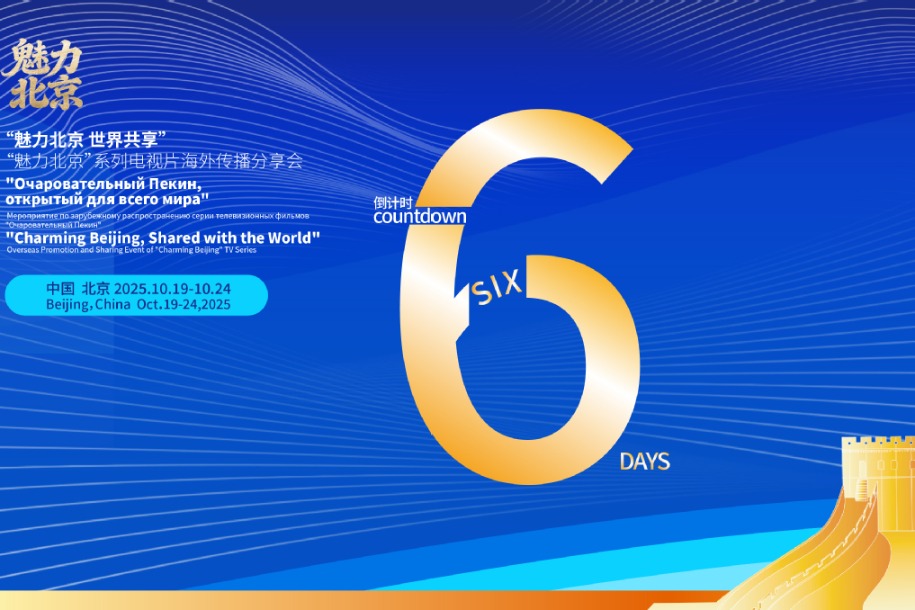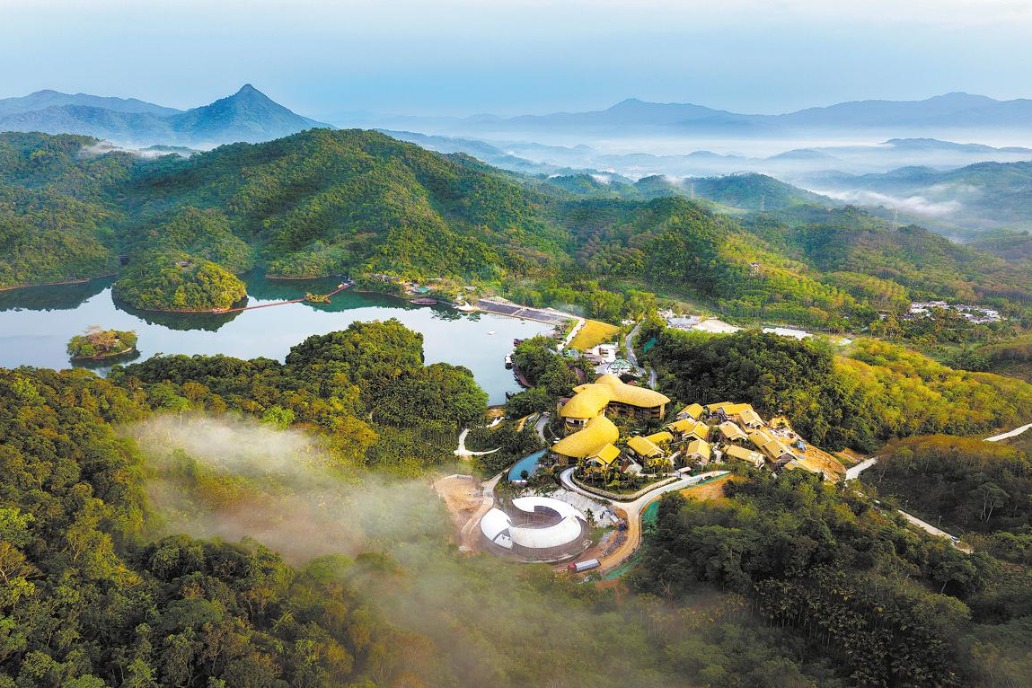Japanese citizens call for halt to discharge of nuclear water
Concerns aired over food safety as 1 year of release marked
By JIANG XUEQING in Tokyo | China Daily Global | Updated: 2024-08-26 09:50

A year after Japan began releasing nuclear-contaminated water from the Fukushima Daiichi nuclear power plant into the Pacific Ocean, many Japanese citizens are still urgently calling for an immediate halt to the discharge, which has failed to reassure both neighboring countries and the Japanese public.
"Our opposition to the ocean discharge of Fukushima's nuclear-tainted water remains unchanged. We want it to stop immediately," said Ruiko Mutoh, a representative of the Complainants for Criminal Prosecution of the Fukushima Nuclear Disaster.
None of the concerns regarding safety, stakeholder agreement, or justification have been addressed, and the citizens of the Pacific Island countries are even more outraged, Mutoh added. "I am very sorry that Japan is contaminating the world's oceans instead of trying to contain the nuclear pollution in its own country."
On Saturday, Japanese citizens gathered for a rally in Shinjuku, a bustling district of Tokyo, marking one year since the ocean discharge of nuclear-contaminated water on Aug 24, 2023.
Participants called for an end to the release of nuclear-contaminated water into the ocean, expressing concern that the discharge is causing anxiety about the safety of food from Fukushima.

The Citizens' Conference to Condemn Further Pollution of the Ocean, a nonprofit organization in Iwaki, a coastal city in Fukushima Prefecture, called for global action on Saturday. The organization invited people worldwide to join in by standing up and holding homemade placards to express their opposition to the discharge.
Chiyo Oda, co-director of the organization, also known as KOREUMI, said the process of deciding to release the nuclear-contaminated water into the ocean was done in a way that ignored the opposition from the public.
"When I eat fresh and delicious fish and shellfish, or when children and young people play by the sea, I feel anxious that the effects of radiation may appear one day. I feel that we are losing our natural way of life, which is to eat delicious products and play freely in the sea around us," said Oda, a resident of Iwaki.
On Sunday, Japan completed its eighth release of around 7,800 metric tons of nuclear-contaminated water into the sea. This was the eighth release overall.
Tokyo Electric Power Company, or TEPCO, the operator of the crippled Fukushima Daiichi plant, has already released over 60,000 tons of contaminated water. The discharge is expected to continue for several decades.
Three Japanese civic groups, namely the Fukushima Prefecture Peace Forum, the Citizens' Nuclear Information Center, and the Japan Congress Against A- and H-Bombs, submitted a second round of signatures to government officials in Tokyo on Wednesday, requesting an immediate halt to the ocean discharge.

Earlier this year, they submitted a petition, accompanied by the first batch of 184,712 signatures collected nationwide. On Wednesday, the second batch of 22,744 signatures was handed over to officials of Japan's Ministry of Economy, Trade and Industry, bringing the total number of signatures to 207,456.
TEPCO has used the Advanced Liquid Processing System, or ALPS, to remove multiple radioactive substances from the contaminated water before discharging it into the sea.
However, this has not alleviated the safety concerns of the Japanese public and residents of other countries.
"Even though ALPS can reduce radioactive particles in the water, it cannot eliminate them entirely. Moreover, the water release is expected to continue for 30 to 40 years, resulting in a tremendous amount of water containing radioactive substances being discharged," said Hajime Matsukubo, secretary-general and researcher at the Citizens' Nuclear Information Center.

Masashi Tsunoda, co-representative of the Fukushima Prefecture Peace Forum, expressed skepticism over whether the discharged water truly meets safety standards.
No assessment
"The government speaks of implementing a long-term monitoring system, yet no comprehensive long-term assessment is being conducted. Therefore, I find it hard to simply accept the safety claims based solely on official statements," said Tsunoda.
Masayo Ikeda, secretary-general of the Women's Conference, a nonprofit organization, criticized the Japanese government and TEPCO for claiming the released water is safe without thorough verification.
"The presence of tritium and various radioactive substances means there is no guarantee that it won't have any environmental impact," Ikeda said. She stressed the importance of Japan continuously verifying the safety of the facilities and the water being released.
Toshihiro Inoue, a special committee member of the Japan Congress against A- and H-Bombs, criticized the government and TEPCO for using the term "ALPS-treated water," which gives the impression that the water is not contaminated.
"This kind of image manipulation has made it increasingly difficult for us to call it 'contaminated water.' But the reality is that the water remains contaminated with radiation. Even if radioactive materials are reduced, they are still present," said Inoue.
He expressed serious concerns over the long-term environmental impact of releasing this water over an extended period, especially regarding its potential effects on marine products that enter the food supply.
On Thursday, TEPCO suspended experimental work to extract nuclear fuel debris from one of the reactors at the wrecked Fukushima Daiichi plant after discovering an error in the installation of a debris removal device.
The government has set a goal to decommission the plant by 2051.However, the recent setback in debris removal underscores the uncertainties surrounding the entire decommissioning process, raising concerns that the timeline may be extended even further. If the timeline is indeed prolonged, it would mean the release of contaminated water could continue, said Inoue.
"What's really needed now is an acknowledgment that the plans are delayed and that achieving the original goals might be impossible. However, instead of admitting this and communicating openly with local residents and those in surrounding areas, the authorities continue to insist that everything is fine. This approach is alarming because it puts undue pressure on the workers, which could lead to mistakes and further complications," he said.
Before the Fumio Kishida administration, Japan's nuclear policy was to "reduce nuclear power as much as possible", but under Kishida, it has changed to "make maximum use of it", said Motoo Tomizuka, a member of No Nukes Plaza Tokyo.
"With earthquakes becoming more frequent each year, continuing to operate aging nuclear power plants only heightens the risk of another severe accident. It's a reckless decision," said Tomizuka.
Masahide Kimura, a member of the Japanese anti-nuclear campaign group, said that in TEPCO's monitoring results, the term "Not Detected "is used to indicate that radioactive material levels are below the detection limit. However, TEPCO treats these levels as if they are zero.
"Given the large volume of water being released, if you multiply this by the detection limit, it becomes evident that a significant amount of radioactivity is being discharged. They're releasing numerous radioactive substances, including plutonium and strontium, not just tritium," Kimura said during a protest in front of Japan's Nuclear Regulation Authority on Wednesday.
Approach slammed
Many others have expressed concern over the Japanese government's approach of proceeding with the ocean discharge without properly securing international understanding.
Chinese Foreign Ministry spokesperson Mao Ning said on Friday that China strongly opposes Japan's unilateral discharge of nuclear-contaminated water into the ocean.
"Let me stress that the more transparent and open Japan is on the issue, the easier it will be for Japan to alleviate international concerns," said Mao.
China once again calls on Japan to seriously address both international and domestic concerns, and fully cooperate in establishing an independent international monitoring arrangement that remains effective in the long haul and includes substantive participation from Japan's neighboring countries and other stakeholders, she said.
Kimura supports China's proposal. "Ideally, Japan should engage in international dialogue and address these issues with other countries before concerns are raised. The discharge is expected to continue for 30 to 40 years, possibly even longer. It is essential to reassess the situation and initiate discussions now, even though a year has already passed," he said.
Ikeda, representing the Women's Conference, shares a similar perspective. "I believe that an international monitoring system is absolutely necessary, and I think it should be established," she said.
























